Only 15% of Croatian School Pupils Will Use Free Train Transport
October the 1st, 2021 - Croatian school pupils will more than likely be taking advantage of free train transport (which is intended for primary and secondary school students), but it will in fact only be used by a very small amount of kids.
As Poslovni Dnevnik/Darko Bicak writes, the Association of Croatian Bus Lines (UHAJLP) welcomed the introduction of free train transport for primary and secondary Croatian school pupils, but also warned that such a form of transport will ultimately be used by only a small percentage of students.
Namely, in the explanation of its decision on the introduction of free transport by Croatian Railways (HZ), the Croatian Government pointed out that it will be able to be used by about 780,000 children and students of primary and secondary schools throughout the Republic of Croatia, but this mode of transport is hardly the most popular.
While most Croatian school pupils live close enough to their schools to simply walk there from home, others arrive by bus, are driven there by their parents, or catch trams in Zagreb, trains are far from popular. In fact, transportation for daily commuting to school will be used by a mere 10 to 15 percent of Croatian school pupils who just happen to be living right next to the railway tracks.
“The basis for the introduction of free transport by HZ Putnicki prijevoz (HZ passenger transport) is the so-called the concept of a public service on the basis of which this carrier receives over 450 million kuna a year from the state and is an additional pilot project of the competent ministry, which will pay out an additional 30 million kuna to this publicly owned company over the next fifteen months.
Although there are of course legal preconditions to take into consideration, as well as obligations derived from European Union directives, this public service is not paid to entrepreneurs who transport students, workers and other passengers by bus on routes that are generally not economically viable, but only to state companies such as HZ or Jadrolinija,'' they stated from UHAJLP.
Commenting on the recent decision of Transport Minister Oleg Butkovic, Hrvoje Mestrovic, president of the Association of Croatian Bus Public Line Carriers, pointed out that out of the total number of primary and secondary school students, HZ transports a maximum of 15 percent per year, which is hardly a huge amount of kids.
Slightly more than a third of those Croatian school pupils are located in cities that have some form of public city transport which is also covered by public services, while half of the students depend exclusively on public line bus carriers, explained Mestrovic.
For more, make sure to check our our dedicated lifestyle section.
Croatian Passenger Transport in 2021 124% Stronger Than 2020
August the 27th, 2021 - Croatian passenger transport for 2021 so far is significantly stronger than that of the comparable period of pandemic-dominated 2020, by as much as 124 percent.
As Poslovni Dnevnik/Jadranka Dozan writes, the restrictions imposed on travel that came with the outbreak of the global coronavirus pandemic last year have left a strong mark on Croatian passenger transport activities, and in recent months this has been reflected in a significant increase when compared to 2020.
While the first quarter of this year was still very much marked by a decline in the number of passengers transported (34 percent) because in a good part of last year's first quarter there were no such restrictions in force, in the second quarter of 2021, state statisticians recorded significant annual growth.
According to the latest CBS data, a total of 13.9 million passengers were transported from April to June, which is 124 percent more than in the same period last year, although this still means that there has been a 35.8 percent decrease when compared to the same period in 2019, equal to 7.7 million fewer passengers.
Of the less than 14 million passengers transported, road line transport is expected to account for 7.9 million passengers. And that is far from the pre-pandemic figures (35 percent less), but compared to last year, it represents an increase of a very encouraging 157 percent.
At the same time, slightly less than 3.4 million passengers were transported by rail, almost twice as many as in the observed period of 2020, with a relative lag for 2019, as was the case in road transport.
The same percentage decrease compared to the year before the appearance of SARS-CoV-2 was recorded in the period April-June by Croatian shipping companies in maritime and coastal transport with close to 2.5 million passengers, which is four fifths more than last year.
The biggest gap compared to pre-pandemic achievements is, unsurprisingly, in air transport. Airlines carried 173,000 passengers in the second quarter of 2021, and although this means an increase of as much as 176 percent when compared to last year, it is also only 27.2 percent of the realisation in the same quarter of pre-pandemic 2019.
If we add up the total decline in the first and growth in the second quarter, the result of the first half of this year is 25.2 million passengers carried or 11.2 percent more people using Croatian passenger transport than last year, but 38.3 percent less than in 2019.
For more, follow our travel section.
1st Train within Seasonal Prague -Zagreb -Rijeka/Split Service Arrives in Rijeka
ZAGREB, 29 May 2021 - The first train within the Czech rail operator RegioJet's seasonal train service on the Prague- Zagreb-Rijeka/Split route arrived in Rijeka on Saturday morning, bringing more than 150 travellers to this northern Croatian seaport.
On Saturday afternoon, the RegioJet train is expected in Split.
Over 30,000 tickets have been sold to date for this train service this summer.
Last year, more than 60,000 passengers rode on this route.
In mid-May, Croatia's HŽ Putnički Prijevoz (HŽPP) rail passenger transport company signed a cooperation agreement with the Czech rail operator RegioJet on the train service on the Prague - Zagreb -Rijeka/Split route, after their successful cooperation last year.
The cooperation between the two railways will continue until 30 September and a total of 176 trains will be made available.
Trains will run three times a week in both directions during May and June while daily trains will run in July and August.
An agreement of partnership was signed by the two railways companies on a 10-year cooperation and partnership in activities and projects related to organising and promoting tour trains in Croatia.
Deer Killed By Train, Stolen By Train Driver, Later Caught Drunk Driving
January 26, 2021 – Road kill we've heard of. But rail kill? One Slavonia deer killed by train was due to end up on the dining table of a train driver, who stopped his train to stuff the dead deer into his cab, before later being caught drunk driving with the decapitated animal in his trunk
Road kill we've heard of. But rail kill? One Slavonia deer killed by train was due to end up on the dining table of a train driver, who stopped his train to stuff the dead animal into his cab. Alas, the čobanac (a spicy, wild meat stew, popular in Slavonia) was not meant to be. He was caught drunk-driving the next day by police at a traffic stop in Vinkovci and arrested.
It's perhaps easy to understand the train driver not wanting to look such a gift horse, or deer, in the mouth. This is not the first deer killed by train or car within the wild rural landscape of Slavonia. With the unfortunate collision having offered the opportunity for fine dining, the train driver apparently had a one track mind.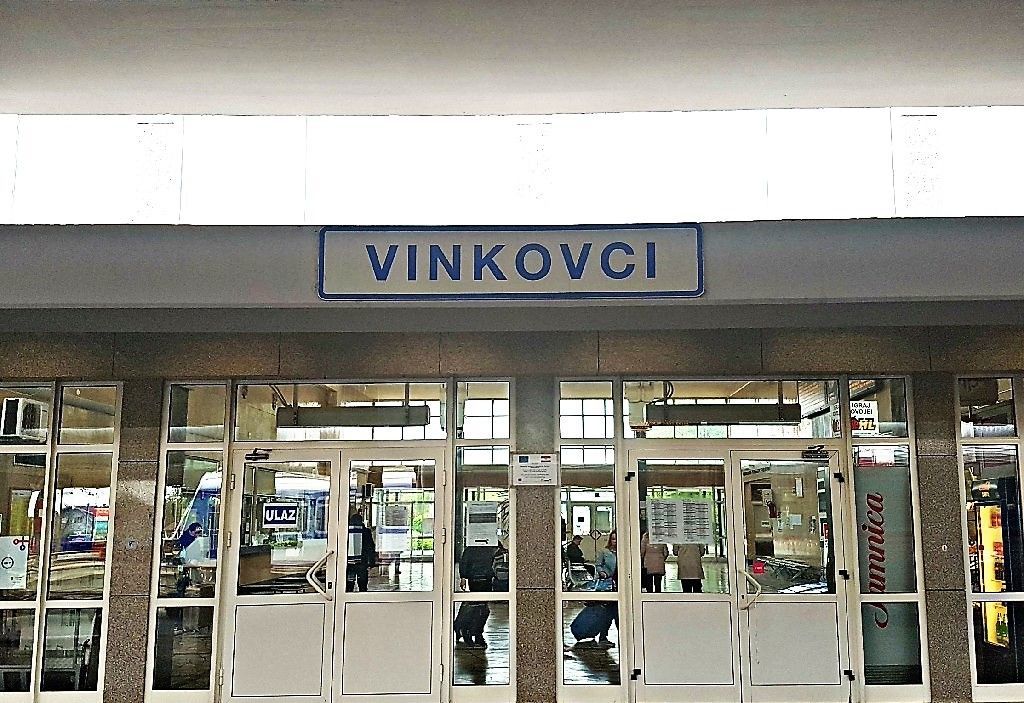
However, with the benefit of hindsight, it was perhaps not the best i-deer to retrieve the sizeable body of the deer killed by train to save for a later feast. Less easy to forgive is that he was caught with the deer while driving his car under the influence of alcohol. Such foolhardiness is no way to go about covering your tracks.
Police halted the man around 5pm on January 12 at a regular traffic roe-d stop and breathalysed him, as they correctly suspected he had been drinking. The 56-year-old man, who had Vinkovci license plates was found to be under the influence of alcohol (1.22 g / kg). However, that was just the first of the finds on the stop.
Upon searching the car trunk, police discovered the decapitated corpse of a sizeable deer. It turned out the train driver had stopped his train the day before to retrieve the animal and placed it in the driver's cab for consumption at a later date. The animal was presumably being transported home – or to a local butcher – by car the next day. But, the traffic stop put an end to any notions of a free meal.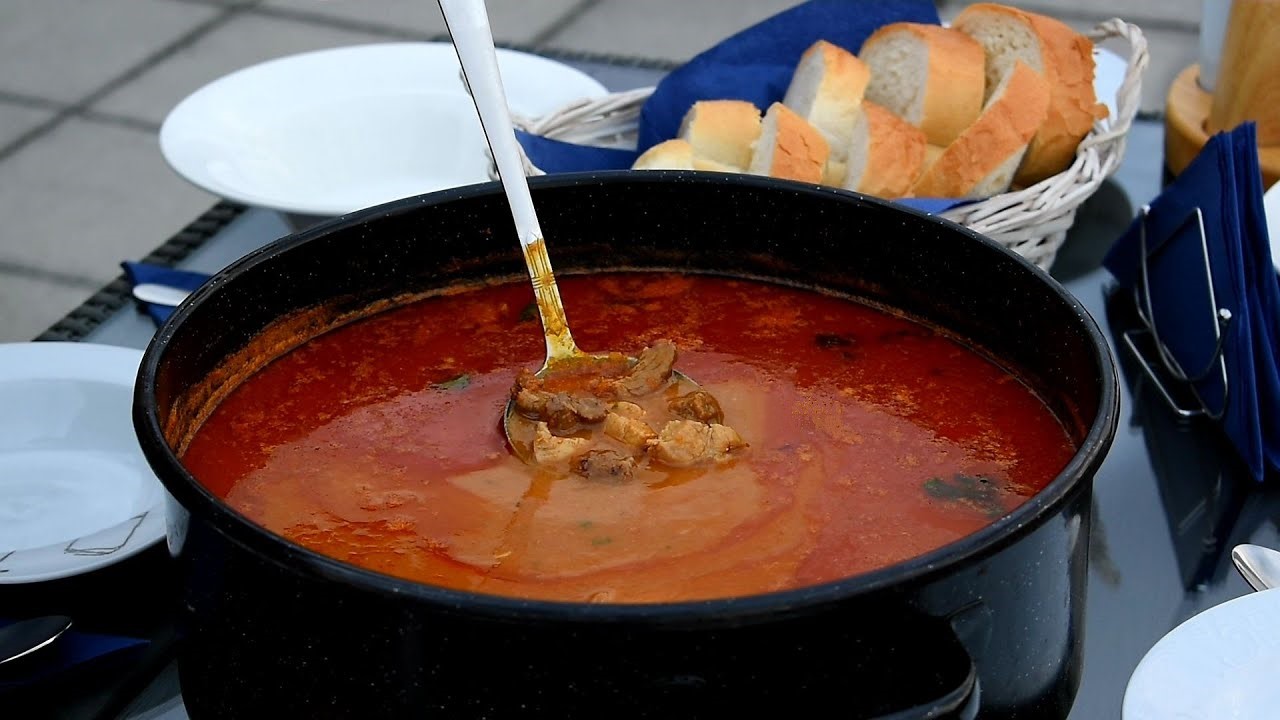 Cobanac, a hearty, spicy stew made in Slavonia using deer and other wild meats. Alas, it was not meant to be © Youtube screenshot
Cobanac, a hearty, spicy stew made in Slavonia using deer and other wild meats. Alas, it was not meant to be © Youtube screenshot
The deer corpse was confiscated and handed over to the hunting society of Stari Mikanovac for safekeeping until a warrant for an autopsy was obtained in order to determine the cause of death. Pursuant to the order of the Vinkovci Municipal State Attorney's Office, the examination of the deer carcass was performed by the Vinkovci Veterinary Institute.
For the appropriation of the deer, the police filed a complaint at the Municipal State Attorney's Office in Vinkovci against the 56-year-old for the criminal offence of theft. For his inebriated driving, the man was issued a misdemeanour order, imposing a fine of HRK 5,000 and was banned from driving a "B" category vehicle for two months. Having been charged for both excess beer and excess deer, at the time of the police road stop you could say the game was well and truly up.
All Full-Time Osijek and Baranja Students Get Free Train Travel
January 9, 2021 – From this year, full-time Osijek and Baranja students can get free train travel any time throughout their own county and for travel to educational centres anywhere in Croatia, in a new deal struck by the county and the national train operator
Once a sea bed, the vast flatlands of Slavonia are perfect for farming. At one time, this area was the breadbasket for much of Yugoslavia. It really wasn't so long ago that many folks left dry and dusty Dalmatia in search of employment and new lives on this fertile ground. Now, it's the other way round - Slavonian youth travel to the coast each summer in search of seasonal work. Others move to Ireland, Germany, Austria. Slavonia is losing many skilled younger people at an alarming rate. Increased mechanisation has reduced the need for labour in the area's agriculture. And, besides, most Slavonian youths are these days educated to a degree where their ambitions are greater than joining local agricultural endeavours.
In an area with limited possibilities, limited opportunities, education lies at the heart of survival in Slavonia. Local authorities know this and try to facilitate education as best they can. It is to that end that those in the Slavonian county of Osijek and Baranja have struck a deal with Croatia's national train operator to offer free train travel to all full-time Osijek and Baranja students.
Agreed upon at the end of last year, the scheme was implemented on 1 January 2021. Osijek and Baranja County has agreed to co-finance journeys for full-time Osijek and Baranja students who study not only within the county itself but across the whole of Croatia. Osijek train station © Romulić & Stojčić
Osijek train station © Romulić & Stojčić
Monthly tickets for travel within the county already held a discount of up to 65 percent given to full-time students by the train operator, depending on the route. The County has now agreed to pay the remainder of the monthly ticket for all full-time Osijek and Baranja students. To meet the requirements of this deal, the departing and destination stations must both be in Osijek-Baranja County. The free monthly ticket allows an unlimited number of trips on the route, meaning that Osijek and Baranja students can also use the train for free on recreational journeys within the county.
The second deal sees the County co-finance 50% of journey costs for full-time Osijek and Baranja students who study elsewhere in Croatia, with the train operator HŽ agreeing to grant a discount to cover the other 50 %.
In order to obtain a free (monthly or individual) ticket, it is necessary to first obtain a certificate from their Administrative Department for the Economy. To get the certificate, Osijek and Baranja students must submit a copy of their identity card, a certificate of full-time study and two completed application forms (these can be found on the county's website www.obz.hr). Requests can be made in person or by mail (Osijek-Baranja County, Administrative Department for Economy, Županijska 4, Osijek or on the e-mail: This email address is being protected from spambots. You need JavaScript enabled to view it.
Free tickets can thereafter be bought by Osijek and Baranja students at the box office, prior to travel, or on the train itself, upon producing the relevant and needed documentation.
Kvarner Goes Green: Opatija and Rijeka Integrated Rail and Bus
January 7, 2021 – From the Bay of Bakar through the beaches of Rijeka to the opulence of Opatija and up, all the way to the border with Slovenia, Kvarner residents and visitors will be able to travel with just one ticket across the whole of the Rijeka integrated rail and bus network
An existing co-operation between rail and bus operators in Kvarner was today extended, allowing the Rijeka Integrated Rail and Bus network to continue for at least another year. This holds exciting implications for travel in the region for years to come.
Planned changes to the infrastructure of the coastal part of the north Kvarner Bay mean that within the Rijeka integrated rail and bus scheme, you will soon be able to travel from the Bay of Bakar, stop off at a series of Rijeka beaches, hop back on public transport to go to Opatija and even travel beyond the coast, all the way to the border with Slovenia, using just one ticket. Passengers will not be limited in their choice to travel by either aril or bus.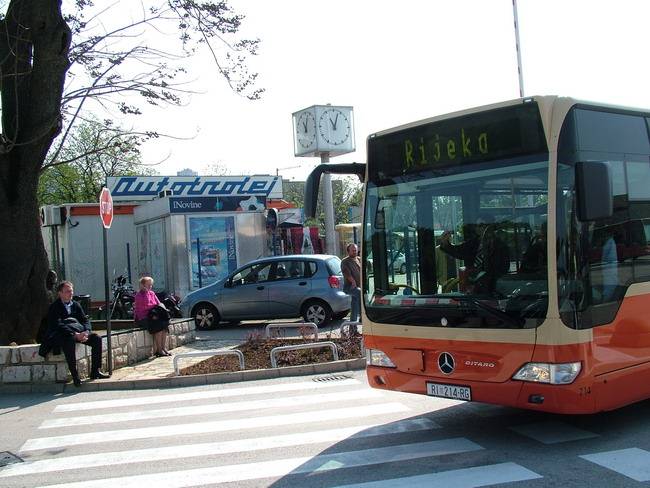
An Autotrolej bus, longtime providers of local bus services in Rijeka © Grad Rijeka
The Rijeka integrated rail and bus scheme, organised through Kvarner County, Rijeka, Matulji and Bakar Town Halls, rail and local bus operators is an eco-friendly drive that seeks to encourage people to leave their cars at home and instead choose public transport. However, access to the Rijeka integrated rail and bus network is not limited to commuting workers and travelling students. Although the scheme is most cost-effective using a monthly ticket, day tickets are available for the network which may be of huge appeal to visitors wishing to explore a wider portion of Kvarner's northern coast.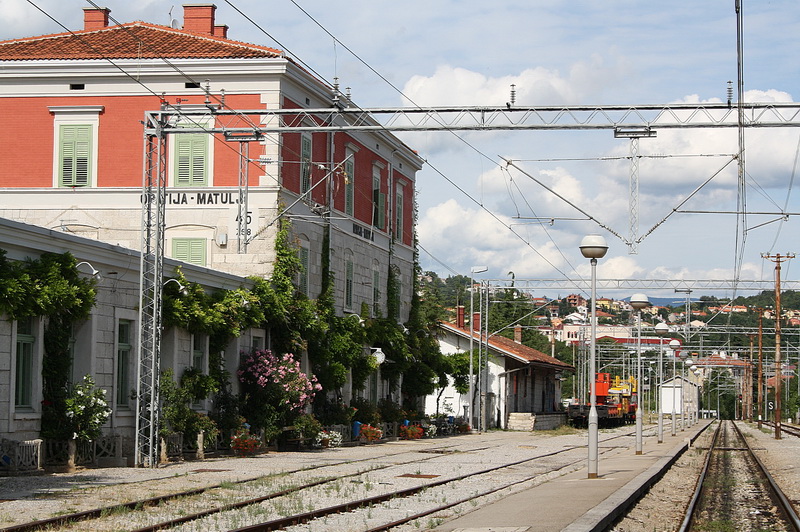
The train station of Opatija Matulji © Damir Covic 1939 / Matulji Tourist Board
Rijeka integrated rail and bus: International
What makes the extension of the Rijeka integrated rail and bus scheme even more welcome is the planned overhaul of infrastructure that will accompany it.
Fifteen extra stations will be added (or reactivated) on the route between Kantrida in the west of Rijeka, along the Rijeka seafront and on to the outskirts of Bakar. Furthermore, the entire train line from Bakar to Šapjane will be brought into the Rijeka integrated rail and bus scheme with the completion of a second train track along the route. Trains along the line at Šapjane. Next stop Slovenia! © DiningCar_
Trains along the line at Šapjane. Next stop Slovenia! © DiningCar_
Šapjane, in the municipality of Matulji, lies 20 kilometres inland, north of Opatija. It sits right on the border with Slovenia. The train line extends across this border, through the Slovenian town of Ilirska Bistrica, and then on to Postojna and Ljubljana, Italy or Austria. This means the Rijeka integrated rail and bus scheme will be directly linked to another green, international travel network.
These routes will all be linked to the incoming, double-tracked Pan-European fast train network, which, as TCN highlighted last year, will connect this part of Kvarner with France, Spain and Portugal in the west all the way to eastern Hungary via Zagreb and Budapest. Needless to say, it will require more than a single day ticket (cvikalica) from the Rijeka integrated rail and bus network to make such a journey!
Croatia Pan Europe Trains Will Run 160 Kilometres Per Hour By 2030
November 2, 2020 – From southern Spain to Budapest through Rijeka and Zagreb and from Salzburg through Zagreb, Belgrade and Skopje to Greece, Croatia pan Europe trains will run 160 kilometres per hour by 2030
In the biggest investment ever made in the infrastructure of the country's rail network, Croatia pan Europe trains will run 160 kilometres Per Hour By 2030. In an investment costing 4.5 billion Euros, 750 kilometres of railways will be modernised.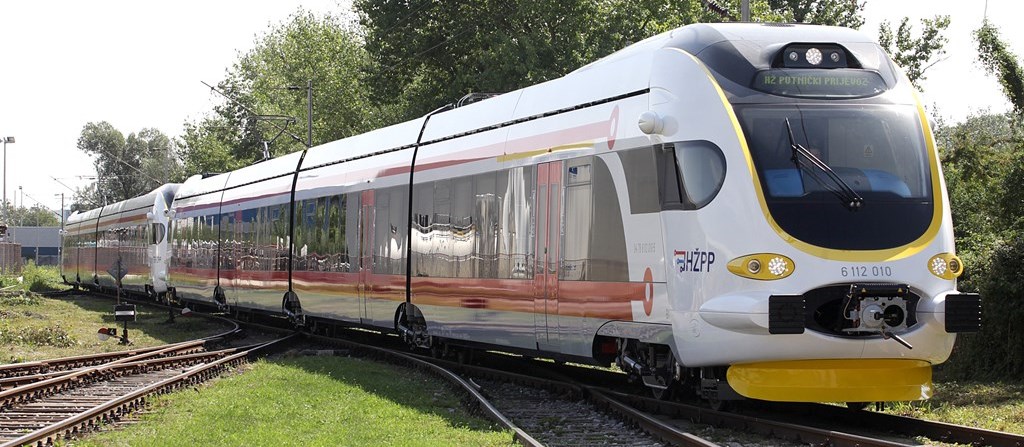 © HZPP
© HZPP
The lines that will receive the upgrade will connect Rijeka to Budapest in Hungary via Zagreb (RH2) and Zagreb to Belgrade via Vinkovci (RH1). Though these lines already exist, they have never undergone an overhaul of the scale proposed. The modernisation with ensure double lanes across the whole of both routes and facilitate passenger train speeds of 160 kilometres per hour.
The level of investment means that during the next ten years, HŽ Infrastruktura's (Croatian Railway Infrastructure Company) rebuild of the Croatia pan Europe trains network will be the largest infrastructure project in the Republic of Croatia and the largest beneficiary of EU grants in the transport sector. Most of the money for the modernisation is coming from European Union grants. Almeria on the Mediterranean, in Andalusia, southern Spain, where the Mediterranean Corridor begins © ddz photo
Almeria on the Mediterranean, in Andalusia, southern Spain, where the Mediterranean Corridor begins © ddz photo
The RH2 line is part of the Mediterranean Corridor which connects the south of the Iberian peninsula with eastern Hungary via six countries. The line runs from Almeria on the Mediterranean coast in the south-east of Spain, through Madrid and Barcelona. It passes through Marseille in France, then northern Italy, Slovenia, Croatia, the Hungarian capital of Budapest, before finishing in Záhony in the east of Hungary, not far from the border with Ukraine. The route covers more than 6000 kilometres. The Croatian section will pass through Jurdani (six kilometres north of Opatija), Rijeka, Karlovac, Zagreb, Dugo Selo, Križevci and Koprivnica. To Croatian rail passengers, the Spanish city of Barcelona will be just a few hours away by 2030 © Patrice Audet
To Croatian rail passengers, the Spanish city of Barcelona will be just a few hours away by 2030 © Patrice Audet
The RH1 line is part of the Pan-European Corridor X. The Croatia pan Europe trains section of this transport route was once one of the three lines taken by the Orient Express. The modernised rail line will start in Salzburg, Austria and pass through Ljubljana before reaching Zagreb. The line will pass through Slavonski Brod and Vinkovci before making its way to Belgrade, then Niš in southern Serbia. The old Oriental Express line then headed east, to Istanbul via Sofia, Bulgaria. The EU-funded train section of the Pan-European Corridor X instead heads south, to Thessaloniki in Greece via Skopje in Macedonia.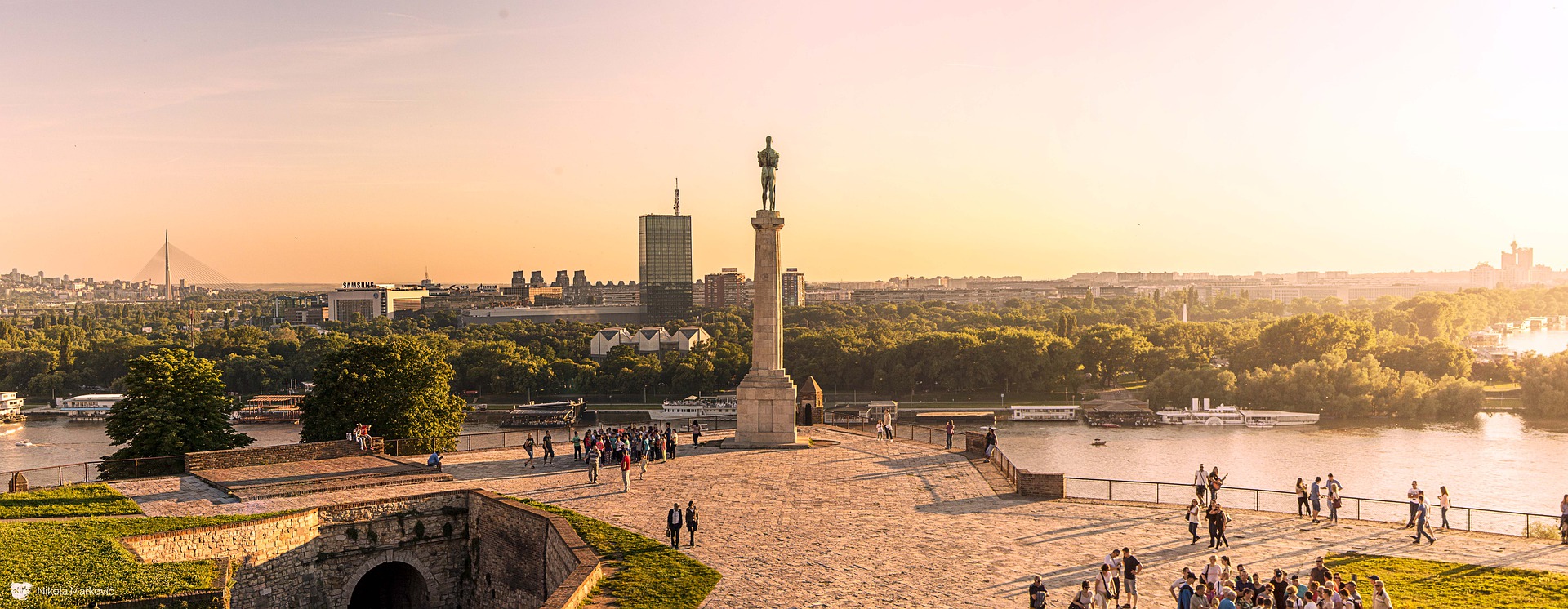 The rail journey time between Zagreb and Belgrade (pictured) will be shortened considerably by the improvements © Djordje Jovanovic
The rail journey time between Zagreb and Belgrade (pictured) will be shortened considerably by the improvements © Djordje Jovanovic
Trains are currently the greenest transport option for long-distance travel. As the world heads in the direction of seeking energy sources that do not rely on finite fossil fuels, rail also currently looks to be the long-distance travel option best-equipped to meet this challenge. In the future, visitors from all across Europe may increasingly rely on the Croatia pan European trains network in order to access the country. The improvements also increase business and leisure opportunities for Croatians in Europe. Thessaloniki in Greece is one of the most popular cities in Europe for visitors. The renewed rail section of the Pan European Corridor X will end here © Dimitris Vetsikas
Thessaloniki in Greece is one of the most popular cities in Europe for visitors. The renewed rail section of the Pan European Corridor X will end here © Dimitris Vetsikas
Around 935 million Euros was invested in the Croatian railway infrastructure between 2010 and 2019. The new investment dwarfs those figures. The initial investment, occurring between 2020 and 2024 amounts to as much as 1.8 billion Euros, of which almost 78.7 per cent is co-financed by the European Structural and Investment Funds (ESI) and the Connecting Europe Facility (CEF). From 2025 to 2030, EU funds totalling more than 2.7 billion Euros are expected to be invested in the Croatia pan European trains network.
Freight train passage along the lines will also be increased, reaching a new speed of 120 kilometres per hour. The Croatia pan European trains network also offers great potential to open up continental Croatia regions to international visitors. The Croatian railway network currently has 2,617 kilometres of track, of which 274 kilometres are double-track and 980 are electrified.
For the latest travel info, bookmark our main travel info article, which is updated daily.
Read the Croatian Travel Update in your language - now available in 24 languages
Croatian and Slovenian Railways Cooperate to Improve and Expand
Despite the issues that still linger between Croatia and neighbouring Slovenia owing to the Croatian-Slovenian border dispute, cooperation in transport services with a coming together of Croatian and Slovenian railways.
As Poslovni Dnevnik writes on the 13th of February, 2020, HZ PP and SZ Passenger Transport are collaborating on a European Union (EU) project to improve their services and expand their supply of international rail lines, worth 2.8 million euros.
HZ Passenger Transport and Slovenian Railways' SZ Passenger Transport signed an agreement on improving services on international trains between Croatia and Slovenia on Wednesday in Zagreb.
The aim is to improve transport on Croatian and Slovenian railways as part of the Connect2CE EU project, which is, as stated, worth a massive 2.8 million euros in total. The agreement was signed by the President of the Board of HZ Passenger Transport, Zeljko Ukic, and the Director of Slovenia's SZ Passenger Transport, Darja Kocjan.
The goal of the project, according to Ukic, is to improve the planning system and encourage the better coordination of regional public transport systems, in order to strengthen co-operation and improve connectivity.
"The rail passenger carriers are committed to promoting strategic partnerships and working to improve train service between Croatia and Slovenia, ie, Zagreb-Ljubljana, with the aim of increasing passenger numbers and revenues," he said.
About fourteen lines operate between Croatia and Slovenia, with just over 130,000 passengers having been transported last year. Ukic believes that with the cooperation between Croatian and Slovenian railways, new service offers will be introduced to increase the number of passengers and provide them with better quality.
The agreement defines measures that can be achieved through the sale of online tickets in international traffic, the introduction of catering services, the promotion of special offers and the introduction of special types of tickets.
Make sure to follow our dedicated travel and business pages for much more.
EU Funds Totalling 1 Billion Kuna Allow Croatia to Purchase New Trains
As Poslovni Dnevnik/Josip Bohutinski/VL writes on the 1st of January, 2020, with the help of EU funds, HZ Passenger transport will receive just over 1 billion kuna this year for the purchase of 21 brand new electric motor trains.
Out of the cohesion fund, HZ Passenger transport will receive 880.3 million kuna, ie 85 percent of the eligible costs, while the remaining 15 percent will come directly from the state budget. After signing the contract for the award of these grants of 1.03 billion kuna, HZ PP will launch an international public tender for the actual procurement of the new trains.
The Ministry of Maritime Affairs, Transport and Infrastructure says that thanks to EU funds, HZ PP will thus modernise its electric vehicle fleet with eleven suburban and ten regional trains, which will provide passengers with much more comfort, reduce their travel time, provide greater capacity and more reliable transportation, therefore improving the competitiveness of services provided by the trains overall.
They also state that the project which has been financially facilitated by the use of EU funds is a continuation of the work of addressing the advanced age of the fleet of trains. HZ PP has so far acquired 27 brand new trains, in accordance with the contract it signed back in 2014 with Končar - Electric Vehicles on the procurement of 44 new trains, worth a massive 1.6 billion kuna in total.
However, back then, only half of the amount was secured with HBOR's credit, so that in the first phase of the procurement, twenty electric motor trains were delivered for the suburban and regional lines and one diesel-electric train was procured for regional transport.
In the meantime, HZ PP secured 130.5 million kuna for the purchase of an additional four diesel-electric motor trains for regional transport without VAT with money from a World Bank loan.
Three have already been put out on the market, meaning that currently 27 new trains are currently running on Croatian railways. From the loan of the World Bank and Eurofima, HZ PP plans to realise a contract with Končar by the year 2022, which will result in the delivery of nineteen more new trains (seven diesel-electric and twelve electric motors), arriving from 2021 to 2024.
Make sure to follow our dedicated lifestyle page for more.
VIDEO: Watch Train Leave Bjelovar Train Station on New Tracks
We recently reported on the train from Bjelovar to Zagreb which runs on Croatian Railways' newly opened tracks. The train ride from the city in Bjelovar-Bilogora County to the Croatian capital should now take a mere one hour, and if you've ever taken a train anywhere in Croatia, you'll know that that's something to be excited about. However, of course, in true Croatian style - the train barely managed to leave Bjelovar train station without encoutering a few little issues.
As Novac writes on the 15th of December, 2019, on the 15th of December at 10:52 in the morning, the first train on the new railway line, which are otherwise the very first railway lines in Croatia to be built after as many as 52 years, departed from Bjelovar train station, heading in the direction of the bustling Croatian capital city.
However, as previously touched on, in true Croatian style, the train couldn't simply just leave Bjelovar train station and embark on its journey to Zagreb without encountering at least one problem. The new train rather anticlimactically stopped in its tracks (literally) just 200 metres after leaving Bjelovar train station owing to some minor technical difficulties, with some blockages reportedly triggered. However, this rather embarrassing situation was quickly remedied and the train continued running, according to a report from the local portal bjelovar.live.
The total value of the project, which was co-financed by the European Regional Development and Cohesion Fund, stands at a massive 258 million kuna.
This is a suburban train section, and the new railway will now allow for shorter journeys. As we reported in the article we linked above, it will now be possible to arrive from Bjelovar train station to Zagreb train station in one hour, a welcome alteration when compared to the previous two hours it took to travel between these two continental Croatian cities.
Watch the video of the train making its maiden journey below:
Make sure to follow our dedicated travel page for much more.


